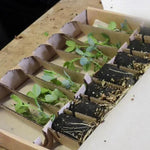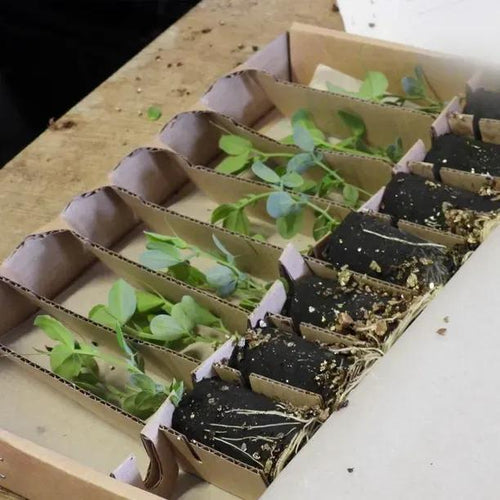Heathcliff Sweet Pea Plants
Swarthy, brooding, mysterious and, yes, just a little bit dramatic, Heathcliff is a sweet pea you'll be tempted to grow in your borders. That deep royal purple-blue is a colour that works in every style of garden, while the long, strong stems make Heathcliff ideal for cutting and bringing indoors. The scent is powerful, almost overwhelming. Plus it has an Award of Garden Merit from the RHS, so like its namesake, it's sure to sweep you off your feet in its short life (without the part where it torments and destroys most of the people at Thrushcross Grange, we hope).
Our Sweet Peas are delivered in purpose-designed, recycled cardboard packaging, and are ready to be planted out when you get them.
We generally send them out between March and May, but we will email you with the likely delivery timescale once you have placed your order.
Features
- Colour: deep blue-purple
- Stem: long
- Height: 1.8m
- Type: Grandiflora
- Scent: hugely scented
- Flowering: June-September
- Planting Months: March-June
- RHS Award of Garden Merit
Growing Heathcliff Sweet Peas
In the garden, you are best following a few simple rules with sweet peas. Give them sun, so south or west facing, plant in really good, rich soil, train the new growth into supports such as canes or an arbour, and don't let them dry out. Once your sweet peas are flowering, give them a high-potash feed every week or two, and they'll flower their socks off from June until September, or even beyond - as long as you remove any seeds that form and keep on cutting the flowers to bring indoors for vases. They really are brilliant value, in terms of sheer joy, ease and the weeks of colour and scent they bring.
History & Trivia
Heathcliff, the iconically complex, destructive and ultimately pitiable character in Emily Bronte's Wuthering Heights has been played on stage and screen by, among others, Ralph Fiennes, Timothy Dalton, Laurence Olivier, Tom Hardy, and that famously rugged, intimidating actor, Cliff Richard.

 Secure, One-Tap Checkout
Secure, One-Tap Checkout
 Hand Picked, Delivered to Your Door!
Hand Picked, Delivered to Your Door! 1 Year Bareroot Guarantee
1 Year Bareroot Guarantee




